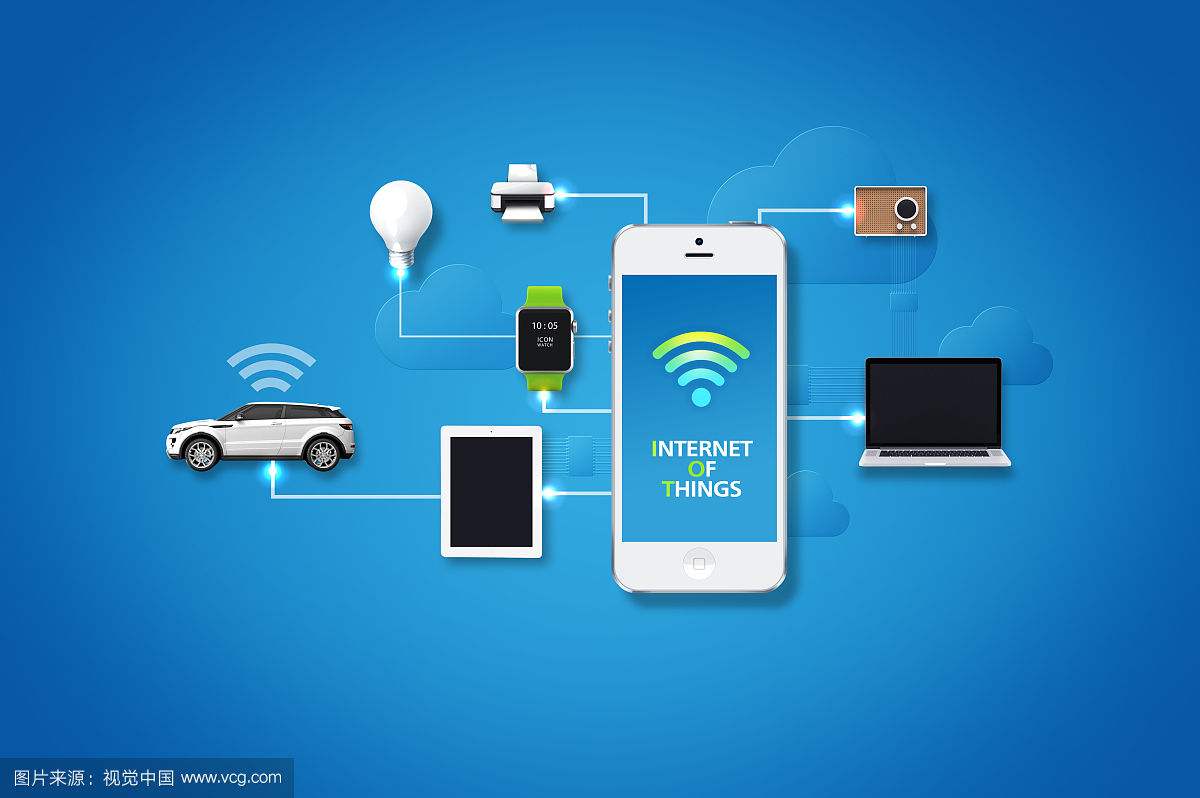With a large number of sensors embedded in various devices such as mobile terminals, smart meters, automobiles and industrial machines, the Internet of Things industry worldwide is on the rise. Deloitte, an internationally renowned accounting firm, recently released a report that this year's global IoT hardware equipment shipments will increase by 60%, the market value will reach 10 billion US dollars, and the corresponding equipment derivative services will reach 70 billion US dollars.

At present, the global economy is setting off a new round of industrial technology revolution, and the further integration of traditional industries and information technology has brought huge business opportunities for the development of the Internet of Things industry. It is estimated that the total number of IoT devices worldwide will reach 2.8 billion by the end of this year, and hardware and connection-related revenue will increase by an average annual growth rate of 10% to 20%. Device-derived services are growing faster, and the market for IoT professional consulting, data analytics, and wearable healthcare devices will grow at a rapid rate of 40% to 50%. McKinsey even boldly predicted that the Internet of Things will create an economic value of 2.7 trillion to 6.2 trillion US dollars in the next 10 years.
Indeed, the development of the global Internet of Things is in full swing. However, careful analysis of the application status of the Internet of Things is inevitable. Statistics show that most of the Internet of Things users are currently enterprises, not ordinary consumers. According to Deloitte's research, 60% of IoT devices are used by enterprises and industries, and 90% of IoT-related service revenues come from enterprises rather than consumers.
What is the reason? The first is the higher cost. For example, the installation of smart home lights requires a controller and an expensive special light bulb, which is several times more expensive than ordinary energy-saving lamps and dimmers. Secondly, the utilization rate is low. For example, the Internet of Things technology is used to control the room temperature. Because most homeowners rarely change the room temperature setting, the frequency of use is extremely low. In addition, the IoT device system is too fragmented and limits the development of high value-added cross-device applications. In addition, the data analysis capabilities brought by the Internet of Things are not very attractive to consumers. For example, if you install a smart meter in your home, you can see the monthly electricity usage online and adjust your power usage to save money and protect the environment. In fact, this smart meter has been used by millions of households in the UK for 3 years, and only 6% of households have used the online inquiry function. The number of households that use more than once is less than 2%.
If the Internet of Things really wants to go to the ordinary consumer and truly integrate into people's lives, there is still a lot of homework to do. Experts in the industry believe that the huge data generated by the connection of IoT objects will generate a variety of applications with different business models after intelligent processing and analysis. This is the core commercial value of the Internet of Things and needs to be vigorously explored. For example, through a networked coffee machine, manufacturers can manage the purchase volume of different types of coffee beans and optimize the supply chain.
The analysis and application of IoT data can also save costs for enterprises. As far as smart meters are concerned, the annual electricity savings for each ordinary household may be tens of dollars, but for the entire power industry, the comprehensive use of the Internet of Things can greatly reduce operating costs. The cost savings caused by automatic meter reading, short-circuit inspection, and real-time diagnosis of the location of the circuit are often several hundred million yuan per year. More importantly, by analyzing the electricity demand of consumers during peak hours, it is possible to avoid unnecessary new power plant construction and save billions of dollars each year. Statistics show that the total savings brought by the Internet of Things to the power industry is 5 to 10 times that of consumers.
The development of the Internet of Things is the trend of the times. As equipment suppliers continue to innovate, reduce costs, expand functions, and develop innovative products with epoch-making significance, the influence of the Internet of Things will rise exponentially, constantly changing the way people live, work and the global economy.
SDEC 401-999KW Diesel Generator
Perkins 401-999Kw Diesel Generator,Perkins Shanghai Genset,Perkins Shanghai Power Generator,401-999Kw Diesel Generator
Shanghai Kosta Electric Co., Ltd. , https://www.generatorksd.com